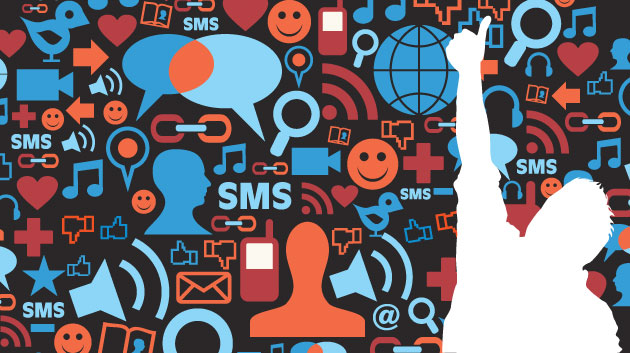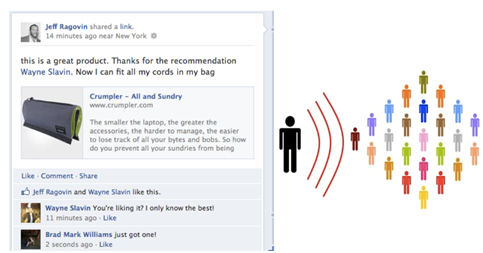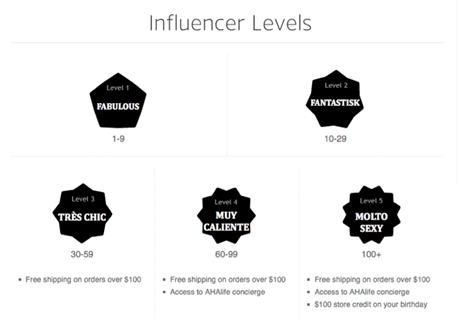How to capitalize on the power of social recommendations
Jeff Ragovin
When our friends and family make a recommendation, we almost always check it out. “You’ve got to try this restaurant!” “When you go to Paris, you have to stay at this hotel!” “That movie is the best movie you’ll see all year!”
We might not always agree with our friends and family on their recommendations, but admit it — we’re very tempted to look into recommendations from our connections, even if it is not something in which we’d normally be interested.
Here is a scenario: I have too many electronic devices with too many power cords, and it’s nearly impossible to keep track of them. I needed to find a product that would allow me to put all of my plugs and cords into a briefcase for commuting and traveling. But instead of doing a quick search on Google, I decided to take to Facebook to see what my friends recommended. Here’s the resulting thread:
In total, I received over 28 recommendations from my friends. I settled on a winner, but it ended up being too big, so I went to another suggestion, which ended up working perfectly. I announced my decision on Facebook, and gave credit to the friend who made the recommendation:
When I shared the product that I bought, it actually led to an additional purchase from one of my friends. Social recommendations can set off a chain of purchases, all from a single piece of advice. And if you’re a brand, you should be excited to capitalize on such a tremendous and powerful opportunity.
Let’s look at a couple examples of brands using social recommendations in innovative ways.
AHAlife
AHAlife is an online discovery destination where you can learn about — and purchase — the best unique products from around the world, collectively curated by a group of influential tastemakers. In addition to having an incredible selection, the site uses a loyalty program that rewards social sharing and recommendations.
The process starts with a purchase. Once the transaction is completed, social sharing is kicked into gear. The buyer is prompted to share the experience out to various social networks, thus providing the highly sought after social recommendation that brands desire. To incentivize customers to share after purchasing, AHAlife created a rewards program that provides points and rewards when friends sign up for AHAlife, and even more points for purchasing.
Once the product is shared, there is a tremendous amount of amplification to people that otherwise may not have seen AHAlife’s products. The original purchaser may share because of the incentives provided:
People don’t just share for rewards, they also share because their social networks are an extension of their identities. Most likely, they want to actually advocate for the product or service because they think that it’s awesome. The rewards points are just a nice added bonus. I have no connection to this company but I love it.
The Body Shop
The Body Shop started its e-commerce and social sharing endeavors with the power of people. The first thing The Body Shop did was activate social commerce on its website by placing share buttons on all of its product pages. Once the share buttons were put in place, The Body Shop looked at data to figure out what people were sharing.
From looking at the data, the Body Shop was able to confirm the popularity of its line of hemp seed products. (It’s important to note that The Body Shop owns the data collected from its social share buttons because it uses ConversionBuddy from Buddy Media. However, many third-party social sharing tools sell consumer data in exchange for their free usage.) From that discovery, The Body Shop created additional social content around these products. Check out the microsite for its line of hemp products. This provides fans opportunities to interact with the brand and share to their social networks. In turn, this created a form of social advocacy. The hemp content, combined with the conversation originating from fans sharing, provided the amplification The Body Shop desired.
In creating these brand advocates, they essentially create spokespeople for The Body Shop who possess knowledge of the brand’s products. Four days after my Facebook post, people are still asking me about the hemp products. The image below is a message sent to me by my high school friend’s mother. She knew I would be able to point her in the right direction on the hemp product!
By implementing social commerce, The Body Shop was able to accomplish the following:
- Understand top products being shared
- Understand conversion rate per social network
- Develop sticky content that it knew users would care for
Takeaways
What should you do to tap into the power of social recommendations? Here are a few helpful hints:
Leverage data from e-commerce sites
The first step is to enable social sharing on your e-commerce site. Once you’ve done that, make sure there’s a way to know exactly what people are sharing and whether revenue is being generated from those shares.
Create great content based on your data
Once you know what products or services are spreading among users, providing sharable content will allow users to interact with your brand and further their brand advocacy.
Test paid media
Your content is your advertisement. When you find a particularly engaging piece of content, whether it is a Facebook post, an image, a video or a line of copy, test and optimize paid media to ensure an even greater distribution.
Your fans are waiting to share your content and recommend it to their friends. They already love you, so make it easy for them to tell spread the word, and watch how quickly and far your content will reach!
Close







